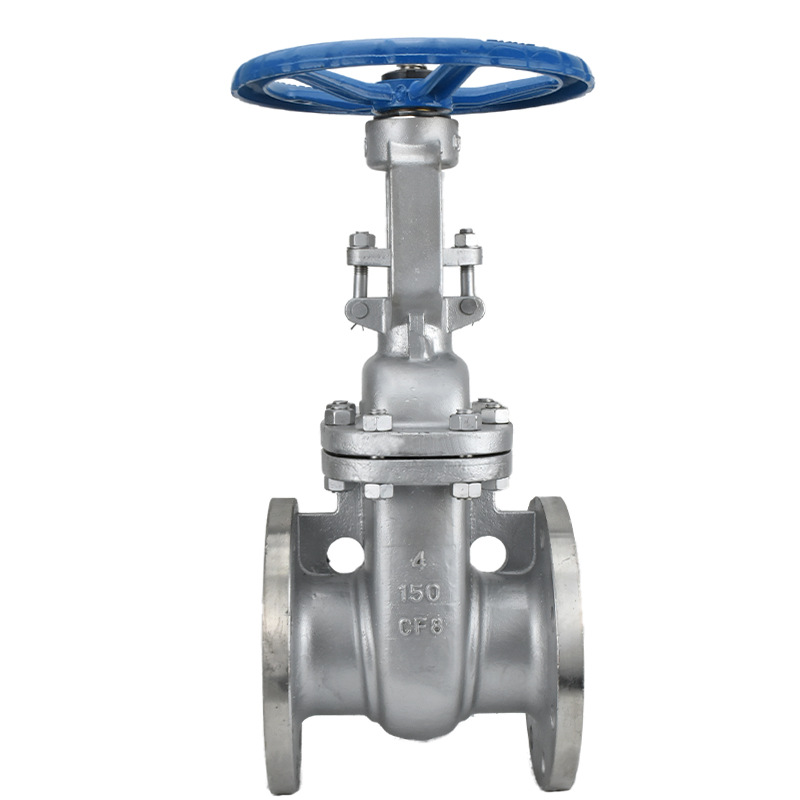الصمامات الإسفينية وصمامات البوابة كلاهما يعمل على تنظيم تدفق السوائل. ومع ذلك، فإن أساليبهم لتحقيق هذا الهدف تختلف.
على الرغم من أن كلا النوعين من الصمامات قادران على التحكم في تدفق السائل، إلا أن الصمامات الإسفينية توفر العديد من المزايا. إذا لم تكن متأكدًا من النوع الأنسب لطلبك، فلا تقلق - يمكننا مساعدتك!
يتمتع الصمام الإسفيني بمعدل تدفق أقل من نظيره في صمام البوابة نظرًا لوجود إسفين الختم في مكانه بين مقعدين مائلين.
صمامات البوابة القياسية عبارة عن أجهزة خطية ربع دورة تنظم تدفق السائل. عند فتحها، فإنها تسد مسار السوائل تمامًا.
توفر الصمامات الإسفينية بُعدًا أصغر وجهاً لوجه ويمكن استخدامها في العديد من التطبيقات. ولسوء الحظ، فإن أسطح الختم الخاصة بها تميل إلى التآكل أو الخدش بسرعة، مما يستلزم إجراء فحوصات صيانة متكررة.
مقاومة تدفق الصمام الإسفيني أقل من مقاومة صمام البوابة، مما يجعله مناسبًا لإغلاق السوائل بسرعة. ولكن لسوء الحظ، قد يتسرب هذا النوع من الصمامات أيضًا.
عند اختيار الصمام الإسفيني، يعد نوع السائل الذي سيتعامل معه عاملاً مهمًا يجب مراعاته. تتعامل الصمامات الإسفينية عادةً مع السوائل عالية اللزوجة، بينما تعمل الصمامات البوابية بشكل أفضل مع السوائل الأقل كثافة.
عادةً، يتكون الصمام الإسفيني المرن من قرص من قطعة واحدة مع حافة مقطوعة لتحسين محاذاة المقعد وأختام أكثر إحكامًا.
الفرق الأساسي بين صمام الإسفين وصمام البوابة هو كيفية عمل الختم. مع هذا الأخير، يمكنك تأمين البوابة باستخدام ضغط الوسائط وحده؛ بينما في الحالة الأولى، يجب تطبيق قوى خارجية لإغلاق سطح الجلوس بشكل فعال.
يتكون الصمام الإسفيني من قرص أو إسفين مستطيل الشكل يتم إدخاله في تدفق السائل. عندما يتوسع هذا القرص تحت ضغط قوة الجذع، فإنه يساعد على ضمان إغلاق الصمام بشكل صحيح.
تم تصميم عضو الإغلاق الإسفيني الشكل لصمام البوابة لتوفير حمولة جلوس إضافية عالية، مما يجعله مقاومًا لضغوط السوائل العالية والمنخفضة. علاوة على ذلك، نظرًا لأن الإسفين لا يتلامس مع مقاعده إلا عندما يكون مغلقًا، فإن هذا يقلل من التآكل والتآكل.
تختلف متطلبات الصيانة للصمام الإسفيني عن تلك الخاصة بصمامات البوابة. تتكون الصمامات الإسفينية من قطعتين – الجسم والإسفين – والتي قد تنفصل مع مرور الوقت، مما يؤدي إلى فقدان الضغط وحدوث تسربات.
ولحسن الحظ، يمكنك تجنب هذه المشكلات باتباع الإجراءات المناسبة وإجراء الصيانة الدورية. وتشمل هذه التنظيف والتشحيم والشد.
يساعد تنظيف الصمام بانتظام على ضمان عمله على النحو الأمثل لفترات أطول من الوقت عن طريق إزالة الأوساخ والحطام المتراكم.
باستخدام قطعة قماش ناعمة أو فرشاة ومحلول منظف معتدل، يمكنك تنظيف الحجاب الحاجز وبطانات الصمام تمامًا. سيؤدي القيام بذلك إلى إزالة الأوساخ والحطام الذي قد يؤدي إلى تلف الصمام.
